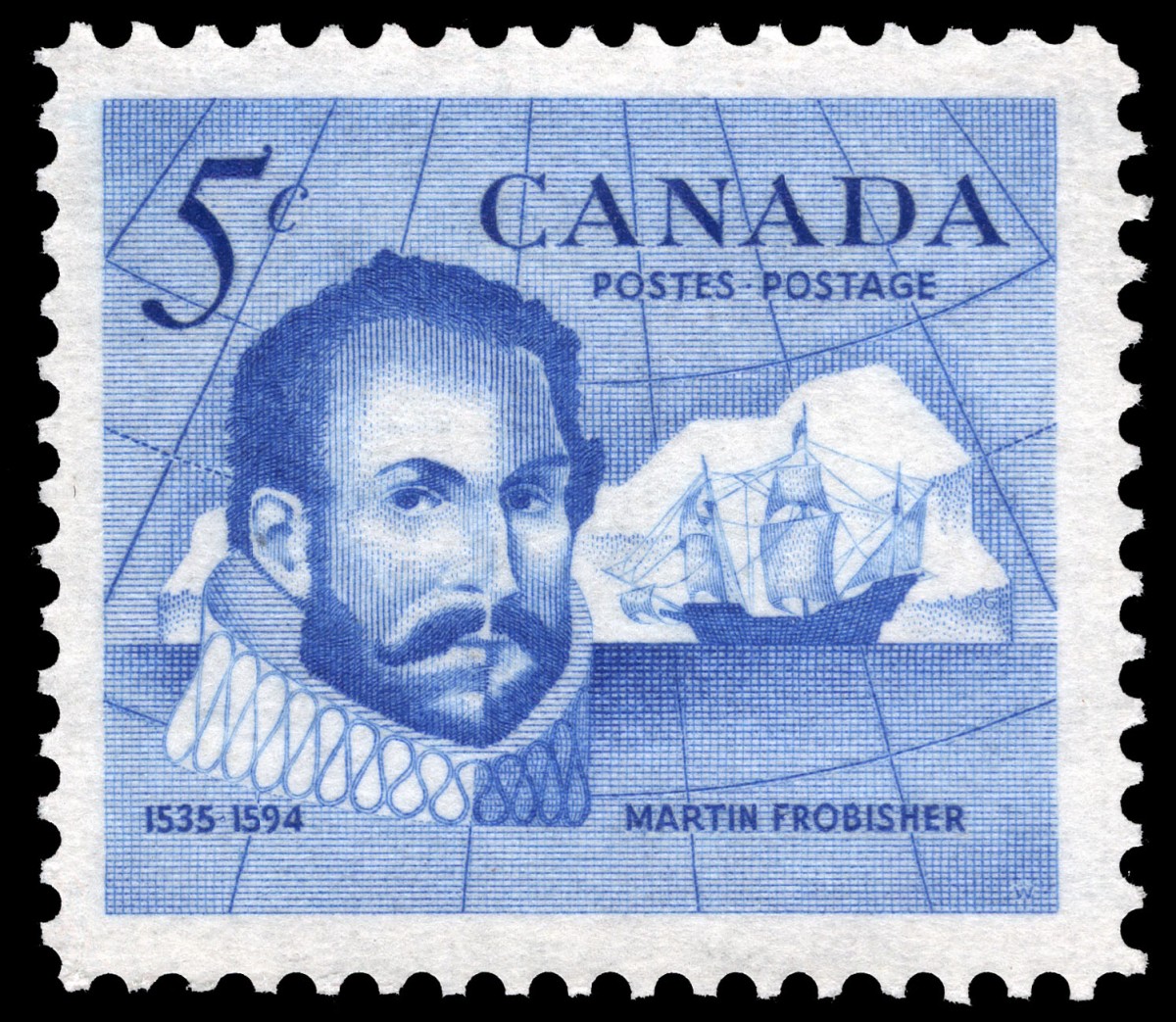On 31 May 1578, Frobisher, in the Ayde, led a fleet of 15 vessels from Harwich. He was directed to bring back 2,000 tons of ore and establish a settlement to gather more. McFee (1928, p. 80) suggests that “without being aware of it, we are now witnessing the inception of the first authentic scheme of colonial expansion in the history of North America.”
The plan was to leave one hundred miners there with enough supplies for the winter and summer. Three ships would be left behind in case the colonists needed to return home before the supply ships came back the next year. Unfortunately, this was a flawed strategy, as the sea in the area was frozen from late November until July, and the miners could not have left even if they had wanted to.
The expedition arrived at Greenland on 20 June and found it to be a forbidding place. As McFee (1928, p. 65) describes: “Frisland, or Greenland as we call it now, was a singularly unpromising coast. The shore was practically inaccessible, the visible highland consisted of grim snow-covered ranges, and the fogs came down with terrifying suddenness whenever the Admiral wanted to seek a landing. Frobisher had the natural horror of a shipmaster losing sight of his ship. He gave it up and set forward for Meta Incognita.”
From Greenland, the group traveled towards Frobisher’s Strait and, according to Frobisher’s chronicler, Best, met with many great whales. One of the ships, named the Salamander, struck a great whale “with such a blow that the ship stood still neither forward nor backward. The whale made a great and ugly noise and cast up his body and tail, and so went underwater, and within two days after, there was found a great whale dead, swimming above the water, which we supposed was that of the Salamander stroke.” (Collinson, 1867, p. 234)
The fleet then suffered a period of great difficulty where they were forced to battle ice floes, strong currents, and foul weather. They were driven south into an unknown strait, which Frobisher named the “Mistaken Strait.” He was, of course, sure that this was a Northwest Passage but left without further investigation, as the fabled passage was now outside his voyage’s specific mission. It would be determined later that his “Mistaken Strait” was the Hudson Strait leading into Hudson Bay and not to Cathay. A similar misconception would lead to Henry Hudson’s death 30 years later.
Windswept ice floes kept the fleet from its intended destination for about a month, during which time the ship carrying most of their building materials was crushed in the ice, and another one deserted and went back to England. Finally, at the end of July, Frobisher found the strait he was looking for, and the miners were deployed to dig for ore on an island he named the Countess of Warwick.
Using the building materials they still had on hand, a house was built near the mining site, but the idea of a winter colony was dropped because they had too few remaining materials to build any other structures. The remains of this house are still clearly visible on the summit of Kodlunarn Island. These are the oldest known remains of a European house built in America north of the Caribbean.
As soon as the miners began working at the ore, Best went exploring. He climbed to the top of what became known as Hatton’s Headland, to look at the fleet and set up a cross of stone, “in token of Christian possession.” A week later, he and some other officers chased and killed “a great white bear, which adventured and gave a fierce assault upon twenty men being weaponed. And he served them for good meat many days” (McFee, 1928, p. 101).
Within a month after beginning the dig, the ships were fully loaded with bags of ore and were ready for the voyage home. After seeing a massive display of the Aurora Borealis, which Frobisher took as a warning that they should leave, “they all departed, or more appropriately escaped, on the thirty-first of August 1578” (McCoy, 2014).
At the end of August, the vessels arrived home and the refiners immediately set out to extract the gold, but none was ever found. Repeated attempts went on until 1583, but there was no longer any room for denial, and the Queen and all the investors were forced to accept failure. Seas of litigations followed “and needing a scapegoat, they focused their anger on poor Michael Lok. In gross unfairness, the gullible investors accused Lok of dishonesty, with Frobisher himself among the accusers. Michael Lok furiously accused Frobisher of bringing back valuable ore on the first voyage but worthless ore on other trips … Lok became the focus of creditors’ efforts to collect, and he was bankrupted, sued, and imprisoned. Lok later claimed to have seen the inside of every jail in London. (McCoy, 2014b, n.p.)
Frobisher would continue his naval service in many capacities over the next 16 years but would never return to the Arctic.
Illustration: Canadian commemorative postage stamp of Martin Frobisher issued in 1963.
Bibliography
Collinson, R. (1867) The three voyages of Martin Frobisher, in search of a passage to Cathaia and India by the North-west, A.D. 1576-8. Reprinted from the first ed. of Hakluyt’s Voyages, with selections from manuscript documents in the British Museum and State Paper Office. Hakluyt Society, London.
McCoy, R.M. (2014) Explorer Martin Frobisher infects the Queen with gold fever. Part 2. Explorer’s tales. https://www.newworldexploration.com/explorers-tales-blog/explorer-martin-frobisher-infects-the-queen-with-gold-fever-part-2
McFee, W. (1928) Sir Martin Frobisher. John Lane the Bodley Head LTD: London
